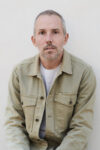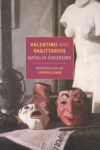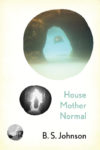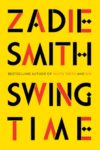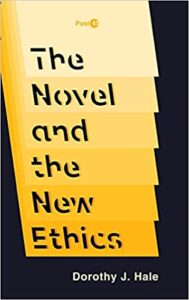
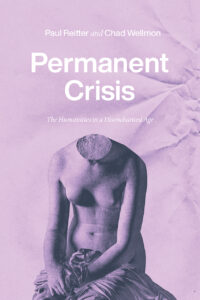
The Novel and the New Ethics – Dorothy J. Hale
[Stanford University Press; 2020]
Permanent Crisis: The Humanities in a Disenchanted Age – Paul Reitter and Chad Wellmon
[The University of Chicago Press; 2021]
If you are reading this review, there is a good chance you consider yourself a “reader.” That self-identification is often a source of pride: reading is tacitly assumed to be a public good, one that doesn’t require a justification for its pursuit. Even in recent scandals regarding the removal of books from public libraries in Texas or the teaching of CRT in the United States,the importance (or dangers) of reading is never in doubt, and the question is never whether to read, but what to read in our limited time. However, if questioned, what justifications might you provide for your reading? And more broadly, why might reading be considered a public good? What do we, as a society, expect reading to provide? Two recent complementary works of scholarship — Paul Reitter and Chad Wellmon’s Permanent Crisis, a historical critique of higher education in the modern era, and Dorothy Hale’s The Novel and the New Ethics, a literary critique of 20th century Anglophone fiction — raise the timely question of what we as readers and people who value the act of reading expect and demand from literature, and how those attitudes came to be.
As Reitter and Wellmon trace the development of the humanities, they follow the thread of the titular permanent crisis through the centuries. While the current, often bemoaned collapse of the humanities in American universities, complete with tanking enrollments and nonexistent tenure-track job market, may appear to be an aberration, it is in fact part of a larger cycle: “the humanities” and “crises” have been rhetorically linked long before the current predicament. But first, the authors must define “humanities.” While the crisis may be permanent, the humanities certainly haven’t been. In tracing the early modern split between studium divinitatis and the literae humaniores, as well as later splits in 19th century German universities between the humanities and the hard and soft sciences, Permanent Crisis begins by describing the development of our modern understanding of the humanities. As the contemporary humanities took shape, it came to differentiate itself from the explanatory endeavors of the sciences, instead focusing on a particular experiential topic: qualitative human affairs. For Reitter and Wellmon, the modern humanities cemented itself by 1930, when the University of Chicago established its “General Introduction to Humanities” course, reliant on the claim that the humanities are not centered on knowledge as research, “something to be created, unendingly pursued,” but knowledge as “a transformative and timeless encounter” with great books. The legacy of this split can be seen in the college classroom today. While many introductory sciences courses are designed to impart information through lectures, with actual scientific practice in the form of lab work reserved for upper-division courses, humanities courses of all levels frequently center on discussions formed by student contributions. In contrast to the highly specialized, frequently impenetrable knowledge held by theology and the sciences, which often require years of study to grasp, let alone fully appreciate or advance, great books are ostensibly accessible to all, even those without expertise.
Yet the importance and role of great books in university education have not infrequently been under attack. By drawing parallels between 19th century German educator Adolph Diesterweg, 20th century canon-defender Harold Bloom, and 21st century intellectual shepherd William Deresiewicz, who all bemoaned the death of the humanities in their own times, Permanent Crisis helps sell the argument that the crisis of the humanities, if not permanent, is certainly regular. As modernity rendered religion insufficient and obsolete, the humanities stepped up to take its place, and thus “came into their own . . . by being framed as, in effect, a privileged resource for resolving perceived crises of meaning and value that threatened other cultural or social goods as well.” To justify its importance, “the modern humanities needed the ‘disenchantment of the world’ and thus frequently found itself, or society writ large, in a state of crisis.”
If Reitter and Wellmon argue that the functions of literature are the safeguarding and dissemination of values, especially in the face of their obsolescence or relegation, in The Novel and the New Ethics, Dorothy Hale expounds upon on one of those values. She points to a new attitude towards reading that arose in the 20th century: to read is to catch a glimpse of the lives of others, a principle that contemporary ethics has privileged, and serves as an acceptable substitute for ethical experience in the real world. Supported by her literary case studies, which include works by Henry James, Zadie Smith, and J.M. Coetzee, among others, Hale traces the rise of this “ethics of otherness” in Anglo-American fiction. She argues that Henry James popularized character-driven novels, which eventually gave way to “a novelistic aesthetics grounded in the assumption that the social value of literature lies in the ethical encounter made possible through the reader’s phenomenological experience of ontological otherness that is credited to narrative form.” Here, we see echoes of the establishment of the humanities in mid-20th century American universities discussed by Reitter and Wellmon, both in the “phenomenological experience” of “encountering” great works and the conception of the “social value of literature” as necessarily ethical. She terms this process as the “ethics of alterity,” which has become “the grounding plank of [the] new ethical phenomenology of literary reading,” and is thus central to how both readers and writers understand the importance of the novel. Further, for those following in the Jamesian tradition, these techniques are not merely visible in the works themselves but are often overtly espoused in interviews and essays or thinly disguised in the texts. Life ends up imitating art.
It is not just writers who have come to explicitly advance the ethics of alterity. Towards the end of the book, Hale turns away from novelists to theorists, including Martha Nussbaum and Judith Butler, to argue that the “ethics of alterity” has entered the academy, cyclically providing a way to read the texts that established the ethics in the first place. It has allowed “new ethical theorists to privilege literary works as ethical agents without seeming to partition either ethics or aesthetics from politics.” If the ethics of alterity, like the contemporary humanities or the act of reading more broadly, has become uncritically accepted as a social good, it becomes increasingly difficult to assess its societal function — helping bridge gaps in a multicultural globalized world — or imagine alternatives. There is a danger in this uncritical acceptance. In her coda, Hale approaches Dr. Rita Charon’s contributions to narrative medicine, arguing that the ethics of alterity, ideally fraught with instability and tension, finds itself in Charon’s work reduced to “its ability to express beautifully and poignantly well-worn sentiments — a safe return to the familiar rather than a voyage to the unknown.” While both James’ original “ethics of alterity” and Charon’s watered-down version may provide some ethical improvement, a critical eye is needed to distinguish between the two.
Hale briefly presents a few possible causes (the “how”) of this new method of evaluation: the rise of an identity politics where otherness is inextricable from identity, the public’s predominant exposure to novels as a moralizing tool through mandatory public education, and authors’ intentional efforts to write novels that shed light on the experiences of their imagined authentic characters. Yet the explanations of this shift (the “why”), so thoroughly described a year later in Permanent Crisis, are absent in Hale’s work, and this elision lends her otherwise thorough work a sense of incompleteness. Similarly, Reitter and Wellmon’s work, while comprehensive and concise, is tasked with the extraordinary project of unpacking several centuries of changes in academia in only a few hundred dense pages, so it is understandable they leave some questions unanswered, including a crucial one: the exact subject of the humanities. Wellmon and Reitter largely provide a negative definition: the humanities are not concerned with the divine, the empirical world, or the quantifiable aspects of human existence. In brief, if humanities’ defenders have “position[ed] themselves as the final guardians of meaning, value, and human being,” what exactly are these values? What does it mean to be a human being? While these questions fall outside Wellmon and Reitter’s purview, they fall firmly within Hale’s, and her “ethics of alterity” serves but one possible answer. Read together, Permanent Crisis and The Novel and the New Ethics suggest that by the early 20th century, the humanities had been substituted for religion as society’s principal source for values and meaning-making, and that by the late 20th and early 21st centuries, those values were frequently expressed through an “ethics of alterity” deeply concerned with vicariously experiencing the lives of others.
These changes are alarming. While Hale’s argument is convincing, one might hope that the novel provides something besides a training in ethics and that ethics is not wholly focused on “the sacred social good of honoring otherness.” Hale elides from her argument a clarification of the relationship between the development of her ethics of alterity and the recent rise of identity politics, however present the parallels. Ethics encapsulates so much more than identity politics, and to see the former reduced to the latter is concerning to Hale. If identity and otherness have stolen the limelight, does society have the resources and training to make moral choices of a different sort? In Mistaken Identity: Race and Class in the Age of Trump (Verso Books, 2018), Asad Haider problematizes the two-sided debate on the left between advocates of identity politics who might argue identity is inextricable from political action and Marxist historical materialists who might argue that identity is balkanizing and distracts from material conditions. By acknowledging the limits of each approach, Haider observes the ways the two approaches can complement and coexist with one another. While Hale tries to avoid taking as firm a stance in The Novel and the New Ethics, in the coda she ultimately takes a similar position to Haider’s. She draws from the best of the Jamesian tradition to conclude that the “ethics of alterity” should be viewed as “a problem to be addressed” by characters, novels, and readers. Thus, a broader “problematics of alterity,” rather than an “ethics,” might provide a more fruitful direction forward.
This might not be enough, however. For Reitter and Wellmon, Adolph Diesterweg made a compelling point: “the education of the young and maintenance and development of the broader culture aren’t the responsibility of professors and universities; they are the responsibility of the ‘entire culture’ and the ‘life’ that all people lead.” Education, while immensely important, is not interchangeable with socialization. This fact is especially important given that recent statistics suggest that even while book sales have increased year-over-year, the percentage of Americans who read has gone down. That decline raises the question of whether most Americans are receiving any exposure to even the subset of ethics described by Hale, or whether novelistic ethics is solely the domain of those with the disposable income and leisure time necessary for reading. Great books, touted over the decades for their accessibility, are clearly not being accessed.
This conversation will remain relevant in both academic and public discourse, and indeed it has only grown since these books’ publication. If The Novel and the New Ethics anticipated the popularity of this debate regarding the importance of the humanities, Permanent Crisis found itself immediately followed by additional works: Roosevelt Montás’ Rescuing Socrates (Princeton University Press, 2021), Arnold Weinstein’s The Lives of Literature (Princeton University Press, 2022), and Merve Emre’s upcoming Post-Discipline: Literature, Professionalism, and the Crisis of the Humanities (University of Chicago Press), not to mention a host of reviews, articles, and other essays that have sprouted up in response and tangled with what we read and why. Hopefully, these and future works will not only address issues raised by the humanities, but also present possible solutions. If we as a society must rely on the novel, and the humanities more broadly, to impart a sense of ethics, which is itself now reducible to an exposure to the lives of others, large swathes of the population may lack useful ethical training, and we are in very dire straits indeed.
Kevin M. Gibbs is a PhD student in English at The University of Texas at Austin.
This post may contain affiliate links.




